141: What it takes to build & scale a $100M lifestyle brand with Jake Kassan
Do you want to know what it really takes to build a $100 million business and brand? Then this episode is for you.
Posted by: Austin Brawner on May 03, 2018


The single biggest mistake that ecommerce companies make when it comes to their website analytics is analyzing the data without purpose.
There’s an ocean of data in Google Analytics that can intimidate even the smartest ecommerce CEO’s.
And because there’s so much intimidating data we often don’t know how to look at the data (or even what to look at) in order to find actionable insights that directly effect the bottom-line.
When analyzed properly Google Analytics can be a treasure chest full of actionable insights. And those actionable insights, when acted upon, can drastically improve our online businesses through:
1) increased traffic
2) better customer engagement
3) a decrease wasted money
4) all of which leads to significant increases in revenue
The key to that treasure chest of actionable insights from your analytics data is a structured way of thinking about the data.
We usually don’t have any kind of structured thinking about what the actual purpose of the site is, therefore, we don’t create an objective set of targets with which to track success or failure when we look at the data in our analytics tool.
The structured thinking process I use comes from the training I received at Market Motive from the number one analytics authority, Avinash Kaushik.
I create what he calls a Digital Marketing & Measurement Model. I just call it a ‘DM3’ for short.
The DM3 provides us with the structured thinking we need to understand why the site even exists, what it’s trying to accomplish, and how we should view the data so it actually has meaning.
The DM3 gives us purpose when we’re swimming through that ocean of data in GA.
Notice how many times I already used the term “actionable insights.” That’s the key differentiator between a true analytics analysis that has an impact on business and one that will just eat up all your time and money.
Outlined below is a sample DM3 I created to help an online store dig up the treasure chest of actionable insights from their Google Analytics data so they could make changes that would have a significant bottom-line impact on their business.
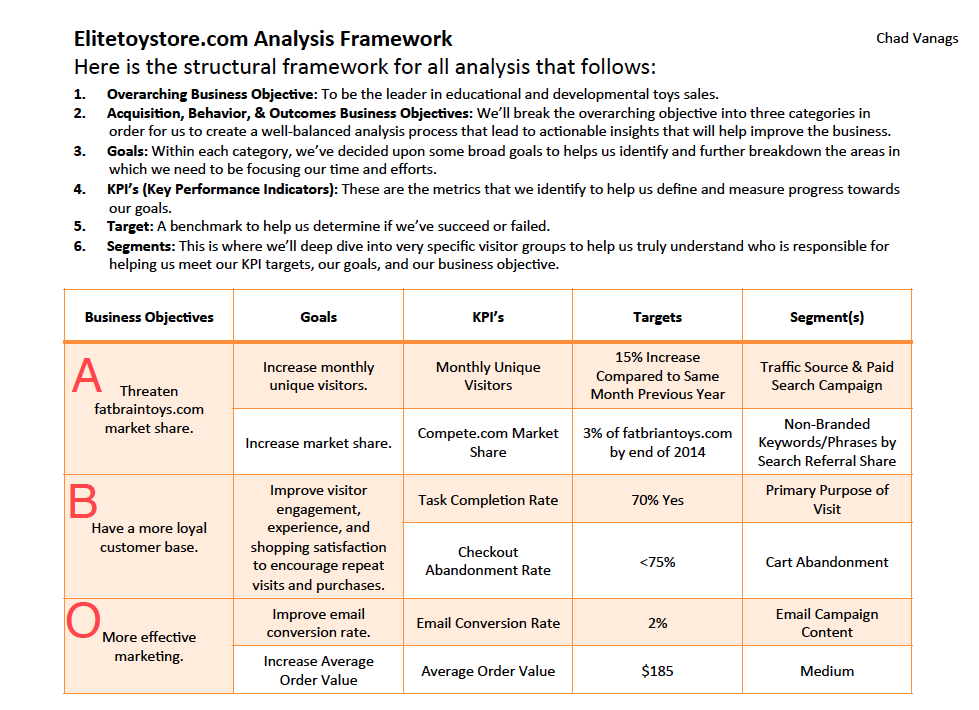
Let’s see how we created this.
There are three categories of analysis that must be covered in our DM3, otherwise our DM3 will be unbalanced in the most important areas of our marketing campaigns and, as a result, our analysis will lack the deep, actionable insights we’re looking for.
The three categories are Acquisition, Behavior, and Outcomes. I’ve highlighted the A, B, and O because they correspond to the rows of information in the screenshots that will soon follow.
To help us generate discussion and more understanding about why the digital marketing campaign exists for our website, we asked ourselves the following questions within in each category.
Acquisition:
1) How do we plan on acquiring traffic to our store?
2) Did we cover all three aspects of a successful acquisition: earned, owned, paid?
3)Where are we spending most of our money and efforts to get traffic?
Behavior
1) What behavior are we expecting when visitors arrive to our store?
2) What pages should they see?
3) Should they be visiting our site repeatedly?
Outcome
1) What actions signify value to our store’s bottom line? A download? Newsletter signup? Inquiry? Purchase?
List them all. There’s more here than you probably think so really dig deep.
These questions get us started, but if all goes as planned we should be identifying other important questions for even deeper understanding in each category.
Now let’s go through the five steps we took to create a DM3 for EliteToyStore.com.
First things first, we start by identifying the broad, overarching objective.
Why does our site really exist?
For our example, EliteToyStore.com exists “to be the leader in educational and developmental toy sales.”
Now, as it pertains to each category of Acquisition, Behavior, Outcomes, we answer again, “why does our site really exist?”
(For the following images remember that: A = Acquisition, B = Behavior, and O = Outcomes)
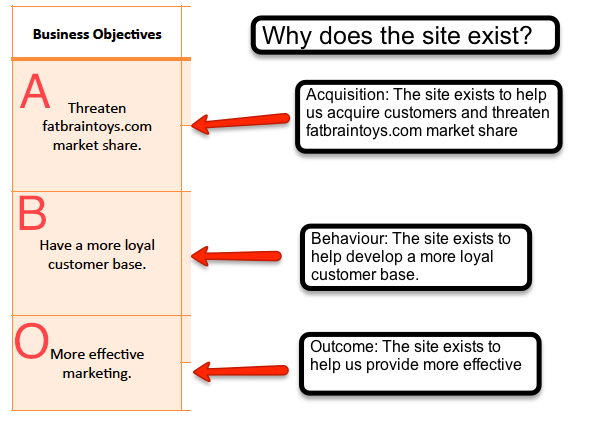
Now we must create goals that are directly tied to the objectives, goals that are clean, are clear to understand, and they provide direction to the marketing team and outside vendors.
Most importantly, the goals must cover ALL the jobs your site is doing, including macro AND micro conversions.
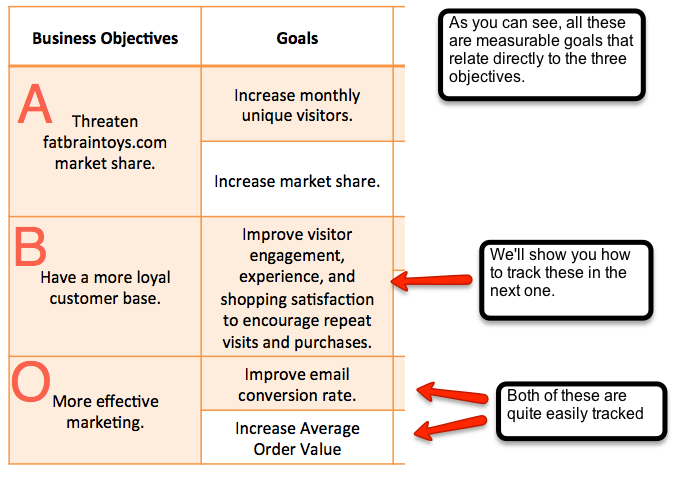
Now it’s time to identify the Key Performance Indicator (KPI) for each goal. Find the relevant metric(s) that help you understand how you’re doing against your objectives.
Make them smart and hyper-relevant/focused, e.g. not just conversion rate but EMAIL conversion rate.
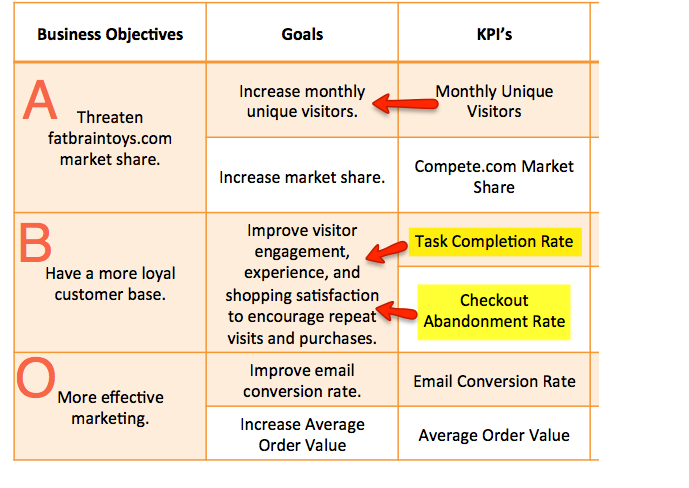
Now it’s time to setup targets, numbers that help us identify if we’ve succeeded or failed in our endeavors.
We need to set these targets to help us know if “X” monthly unique visitors equals success or failure.
The same thing goes for the percentage of market share. We now own 2% of educational and development toys market share. Is that great or not so great? If we only owned .75% two months ago we’d probably consider it a success.
If we were responsible for decreasing checkout abandonment rate from 85% to 60% would we strategize, implement, and test checkout processes differently than if the gap needed to be decreased from 65% to 60%? Quite possibly.
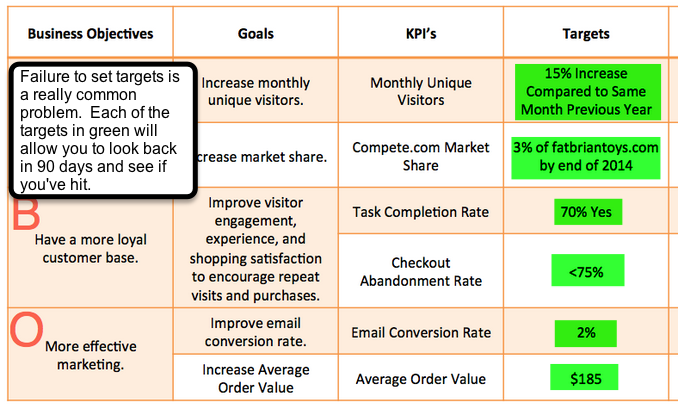
We must set targets because they are the key to accountability for everyone involved in our digital campaigns including our web designer, SEO specialist, PPC vendor and more.
This is quite possibly the most valuable aspect of the DM3.
When we log into GA we’re flooded with that ocean of data that could take us in more ways than we could imagine. This is where we need to break down our DM3 by important segments to analyze.
We identify the important traffic sources where marketing money has been spent. We identify what behavior the visitor should be taking, or identify the primary purpose of a customer’s visit that should eventually lead to a successful macro or micro conversion. We identify what email content should be most effective in converting customers.
We ask the questions that help us identify the important segments.
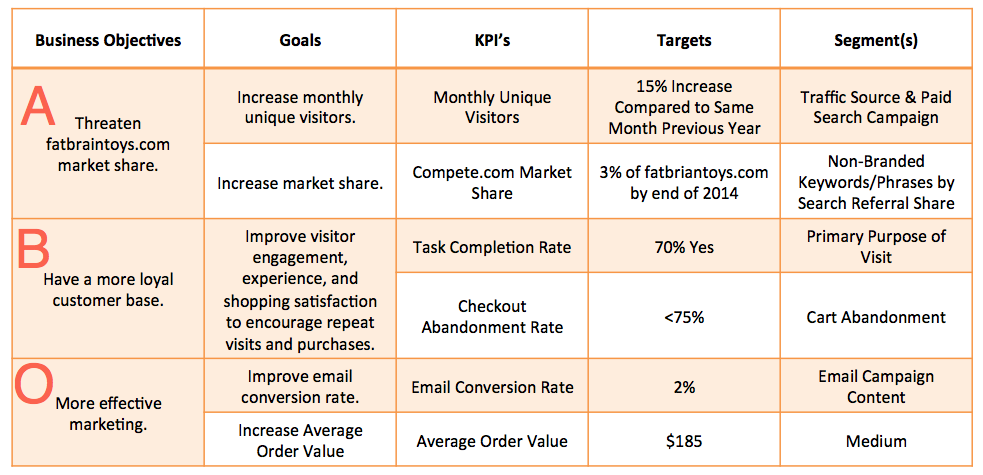
And there you have it, a complete DM3 that gives our ocean of data hyper-focused purpose.
Now you’ll be able to view your data in ways that provide profitable, or money-saving, actionable insights.
It’s a lot of work to complete one the right way (my first one took for. ev. er!), but your analytics success starts with the DM3 so it’s in your best interest to spend that time creating one.
Most importantly, when you decide to take action on these insights you know you’ll be making decisions based on data and not on someone’s opinion, “best practice” or the newest trend.
The data is secondary; understanding how data serves our sites purpose(s) is what really matters.
Now go create your DM3!
If you need some help setting one up, feel free to email me at Chad@EcommerceInfluence.com and we can schedule a 15 minute chat to help give you some direction.
Your turn (Leave your comments below): What’s your experience with navigating your store’s analytics and how do you find actionable insights that have a bottom-line impact on your ecommerce company?
Follow on Twitter:
Follow @chadvanags
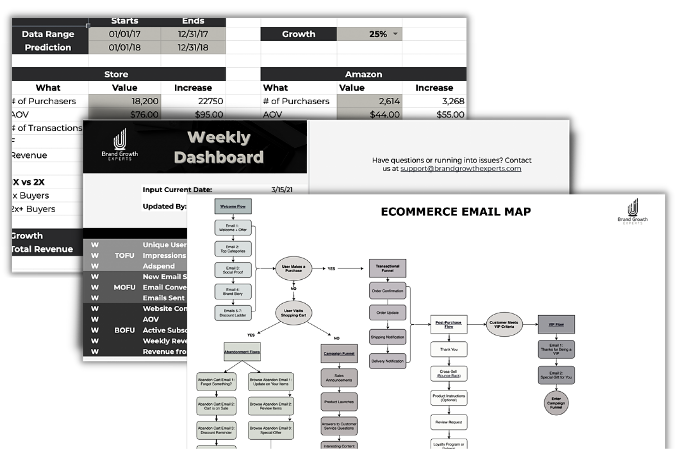
Enter your email to get our proven resources that will help you achieve massive growth without the burnout.